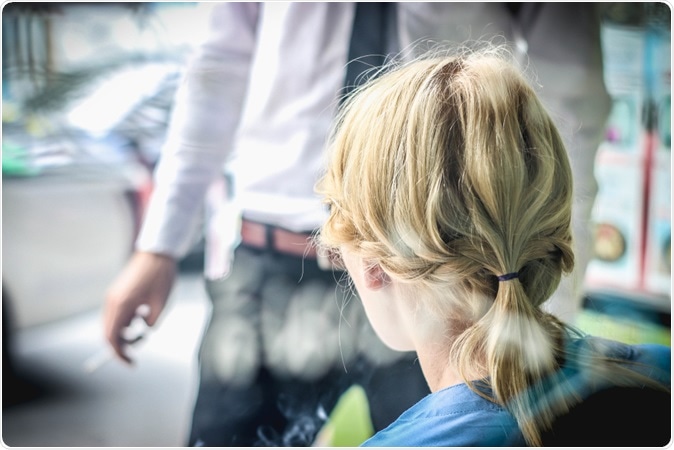
Passive smoking exposure among kids greatly increases COPD risk late in life
According to the latest research adults who do not smoke are at a greater risk of dying of serious lung disorders if they grew up around parents who smoked. The study appeared in the latest issue of the journal American Journal of Preventive Medicine.

Image Credit: Kangwan Nirach / Shutterstock
This new research led by the American Cancer Society looked at over 70,900 non-smoking adult participants between ages 50 and 74 years at the start of the study. They found that if the participants had grown up with a smoker, they had more risk of health problems including lung diseases. They calculated that childhood passive smoking could add seven deaths to every 100,000 non-smoking adult deaths annually. Ideally people should quit smoking and more so if they have children at home.
Each of the participants were asked about their exposure to second hand smoke throughout their lives and their health problems were tracked in the national database for 22 years.
The study results showed that children who were exposed to smoke for 10 or more hours per week every week, had a 27 percent raised risk of death due to ischemic heart disease, 23 percent raised risk of death due to strokes and 42 percent raised risk of dying of chronic obstructive lung disease (COPD) compared to non-smokers who grew up with non-smokers. COPD includes a range of lung diseases including chronic bronchitis and emphysema. Overall death rates were 31 percent higher among those who were exposed to second hand smoke as kids, the team of researchers found.
Experts have added that children growing with parents who smoke have a greater risk of getting asthma, lung diseases and also have a poor lung development. These lung problems that begin during childhood tend to remain as they grow. The lung problems may not manifest during childhood exposure, they explain. The health problems later in life also rise with increased exposure to second hand smoke during childhood, they noted. Epidemiologist Dr Ryan Diver, one of the study authors, said that this is the first study that associated childhood passive smoking and death due to lung diseases such as COPD later in life. This study, he said, is an assertion to stop second hand smoke exposure among children.
Dr. Diver adds that America has taken steps to ban smoking at homes to reduce childhood exposure to passive smoking. The plan for not allowing smoking at a public housing was first announced in December 2016 and came into force in July. This step should be adopted by other countries such as UK as well. This plan is already under consideration in Scotland. Once in place, it could prevent exposure of children and babies to passive smoking to a great extent.
Diver, along with other experts have said that children who grow up around smokers are more likely to end up becoming smokers themselves. This is another reason why care givers to children need to stop lighting up around them, experts add.























.png)











No hay comentarios:
Publicar un comentario